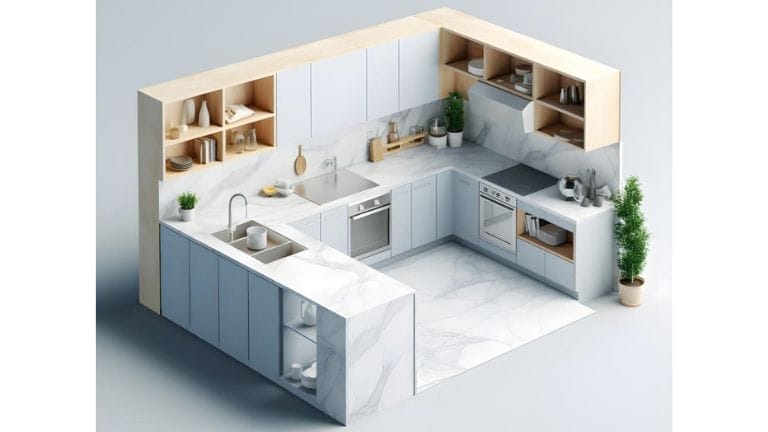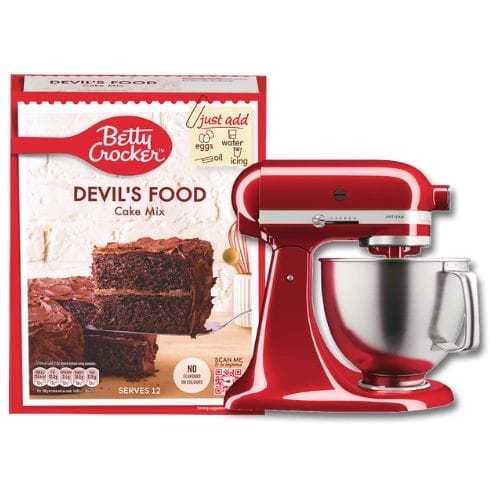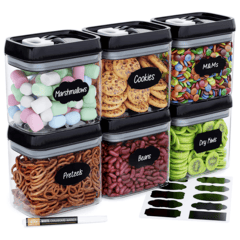Renovating a kitchen in Ireland can be pretty costly, with prices fluctuating widely depending on the project’s scope, the kitchen’s size, and the quality of the materials. For example, a basic kitchen renovation, which typically involves minimal plumbing or electrical changes, laminate worktops, standard appliances, and lower labour costs, costs between €5,000 and €10,000. If money is short or you feel that a complete renovation isn’t worthwhile in terms of adding value, consider a simple kitchen makeover. It can be remarkably effective and will buy you time to save for a better kitchen later.
Doing a kitchen renovation without spending anything is challenging, but there are some clever ways to refresh and even remodel your cooking space at little to no cost if you’re resourceful. Here are some realistic options:
Check The Types Of Grants You Can Get To Make Improvements In Your Home
Grants are available from local authorities for people who need to make modifications to their homes, primarily focusing on energy efficiency upgrades and adaptations for people with disabilities or older adults. These can sometimes cover kitchen renovations. The Vacant Property Refurbishment Grant explicitly covers kitchen units and fittings, providing a maximum funding limit of €7,700. You can transform a non-residential property, such as a shop or a farm building, into a modern home. Once your application is approved, you have 13 months to complete the work.
Cosmetic or luxury upgrades, such as replacement kitchen doors, are typically not covered. However, if the kitchen is in such a poor condition that replacement is absolutely necessary to make the property habitable and liveable, it may be considered. The local authority will send someone to verify that the work has been completed as specified and in accordance with the associated costs. If the local authority is satisfied with the work and the charge document is signed, the grant will be released.
If You Have A Trade, You Can Swap Services With Contractors Or Handymen
Many people pursue careers in the trades because they pay well and not all of them require a four-year degree. If you’re a skilled trader, like a plumber, motor mechanic, or an electrician, you can barter with individuals for their services using online platforms in lieu of fees. It doesn’t matter if you’re handy with IT, tutoring, or another service, you can trade your skills with someone who can help with carpentry, tiling, and so on. There may already be people in your circle who are up for it, so all you have to do is ask.
Repurpose What You Already Own Or Use Leftovers From Other Projects
When planning a kitchen renovation, it’s important to consider what items can be repurposed. If they’re in decent condition, you can save money, reduce waste, and give your kitchen a unique, character-rich look. Instead of discarding what you already have, you’re transforming it into something that feels custom, sustainable, and budget-friendly. Cabinets, countertops, or hardware can be refinished or repainted and reinstalled in another space, such as kitchen; since they’re pre-built, you won’t just save money, you’ll save time.
With proper storage, lumber and wood materials don’t go to waste; they become building blocks for future projects, like building custom shelving, creating a rustic kitchen island, or crafting trim and mouldings that tie the space together. Repurposed wood can also add warmth and character, whether as butcher-block style counters or even accent walls. The mineral stains around the nail holes and the deep tones formed through decades of oxidation give reclaimed wood a look that manufactured products simply can’t match.
Flooring can be more challenging to repurpose compared to other materials, given the wide range of types and the need for careful removal and storage, but in some cases, it can still be possible. Materials like bamboo and cork are your best allies, yielding better results when reused in a kitchen renovation. Bamboo can be refinished into sleek countertops or cabinetry, and cork can be repurposed into flooring or wall panels that provide warmth, comfort, and sound absorption.
Check Out Recycling Centres, Demolition Sales, Or Online Marketplaces
You can find high-quality items at a fraction of their original retail price at recycling centres, demolition sales, and online marketplaces, which carry everything from solid wood cabinets and stone countertops to vintage fixtures and one-of-a-kind hardware, giving your kitchen renovation both character and value. Shopping second-hand can help stretch your budget, reduce waste, and support the local community. By choosing salvaged materials, you help curb the demand for newly manufactured goods, conserving the energy and resources associated with their production and transportation.
Recycling centres accommodate gently used cabinets, countertops, and fixtures at low prices while keeping materials out of landfills, whereas demolition sales give you access to high-quality lumber, stone, and vintage pieces salvaged before buildings are torn down, often at a fraction of retail cost. Online marketplaces provide convenience and variety, offering everything from appliances to full kitchen sets directly from homeowners or contractors. Instead of a cookie-cutter design, you end up with a space that reflects both your style and values, blending practicality with sustainability in a way that feels truly unique to you.
You Can At Least Plan Your Dream Kitchen Without Cost Using Tools
You can design a kitchen like a professional using free-to-use tools that allow you to move beyond simple sketches and create accurate, detailed plans that cover layout, materials, and aesthetics. For example, you can use the IKEA Kitchen Planner to draw your kitchen floor plan, add fixtures, finishes, and cabinets, and see them in 3D. Plus, you can change the colours, finishes, and textures of countertops, cabinets, backsplashes, and flooring to see different aesthetic combinations.
If you’re just starting out, it’s a good idea to use KitchenPlanner.net, which allows you to “walk through” and see exactly how the finished kitchen will look from every angle. It’s free to use, allowing you to save on the initial consultation or design fees from a professional, which can represent a significant investment. Although design fees in Ireland are lower than in the United States or the United Kingdom, they’re still a noticeable extra unless you use free DIY planning tools or opt for a supplier that includes design in the package.





